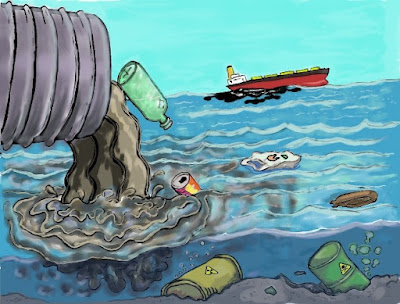Malabanan: 4 Types of Septic Tanks
The world is already facing the consequences of continuously burning fossil fuels, improper waste management, and general lack of respect for nature. The land, water, air and other parts of the environment are all subjected to severe pollution. On a recent study, data shows that 90% of sewage (wastewater from domestic households that contains feces, urine and laundry waste) and 70% of industrial waste (from factories and agricultural operations) of several developing countries is discharged without treatment. If this continues, our environment will be filled with chemicals and dirt that will soon harm not only animals but all kinds of life on earth. But the good news is, this effect can be prevented if people start and continue to manage their wastewater properly. Thus, the relevance of Malabanan septic tanks.
Malabanan septic tanks are underground watertight chambers connected to fixtures' drains to collect sewage. The accumulated wastewater is then held in the tank long enough to let solids and liquids separate. The solids are kept inside the tank. Meanwhile, the water is treated and uniformly distributed in the drain field wherein gravel and soil act as biological filters. Through this, harmful environmental effects are reduced and diseases (such as diarrhea and infection) are prevented.
However, there are many types of septic tanks available in the market. To prevent sewage pollution, learn each type and see what best suits your wastewater management needs.
1. Concrete
The most popular option by commercial, residential and industrial sites are concrete septic tanks. They are costly, but durable, spacious and can last for a lifetime. They are not prone to leaks, corrosion and cracks. Also, because it’s heavy, it can handle groundwater pressure and soil shifts. They are also easy to maintain and repair as one call to Malabanan is all that it takes.
2. Plastic
Tanks made of plastic are commonly used by small sites such as outhouses, trailers, homes, and cottages. They are easy to install, convenient to use and affordable. They are also resistant to cracking and rusting, unlike other tanks. However, larger buildings can’t use them as they can’t handle immense groundwater pressure. They are also sensitive to sunlight exposure and this causes them to bend and be brittle.
3. Fiberglass
Fiberglass is more durable than plastic and can handle immense groundwater pressure. It lasts longer and stores more wastewater. It is also low maintenance, fire resistant and weatherproof. The only downside is that it can be damaged when the soil shifts (due to earthquake) and when heavy vehicles pass over its location.
4. Steel
Steel septic tanks are the least popular and least durable. According to Malabanan, these tanks are inadvisable for all kinds of infrastructures as these deteriorate fast. These are prone to corrosion and tree root damage which often lead to perforations, leaks and collapse. What’s worse is that these tanks require too much maintenance and they are hard to remove once they fail. A steel tank may cause bigger problems in the long run.
Those are the types of septic tanks available in the market. To know which one best suit your area and how will you effectively prevent sewage pollution, contact Malabanan today!



Comments
Post a Comment